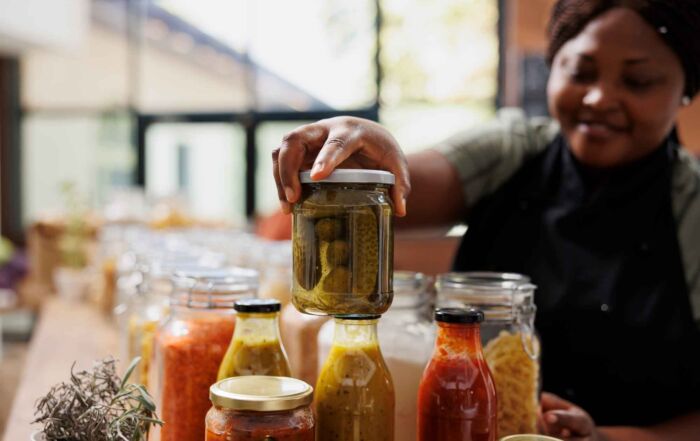Proper Cooling: Your Food-Safe Culture Demands It
Last week, we had a great webinar presented by Dr. Paola Paez from the Center for Food Safety in Child Nutrition Programs at Kansas State University. If you were not able to join us, please feel free to go back and review the webinar to learn some valuable ways in which you can implement safe cooling practices in your foodservice operation.
In a perfect world, if any amount of cooling of food products within your operation was done, there would be a blast chiller. Blast chillers are designed to expel hot air from the environment, whereas a regular cooler is only equipped to keep cold air, cold. But, they are an expensive investment (estimate of $5,500 – $10,000 for counter model!) and once you invest in one, you still must find physical space and a workable location in the operation. So, we know it isn’t always feasible financially, especially in the middle of a global pandemic which has impacted our industry so profoundly. As we noted in our last blog and was discussed by Dr. Paez in her presentation, correct cooling procedures don’t have to be difficult or expensive, but make sure the practices identified for your operation work for you and your staff, both in terms of the usability of the methods to making sure the method chosen cools products effectively. Moreover, be sure to communicate and train staff accordingly.
…together we keep OUR food and OUR customers safe. Together we implement and follow safe cooling practices. Together we excel.
We so often find that managers and supervisors go through the process of training staff on the correct way to cool food, but if the importance of the practice isn’t internalized and that practice isn’t enforced by managers, why would employees continue to do it? As managers, demonstrate the importance of correct cooling to your employees by developing the proper infrastructure to support it, including the use of written standard operating procedures and/or logs to document that cooling practices have met Food Code standards. Yes, we know, this is easier said than done, and we realize all the demands that are placed on a foodservice manager. This is why we stress the importance of developing that food safety culture in your organization – so it isn’t all on your shoulders as a manager. Cooling, as well as other food safety practices, should be ingrained in the life of the operation with every employee being accountable, and providing oversight, that safe practices are followed.
There are templates readily available to use in creating a standard operating procedure for cooling, so you don’t need to start from scratch. Iowa State University Extension has SOPs throughout the flow of food that can be customized to your operation (for instance, you can modify to reflect operational specifics or add the organizational logo). These were developed for different sectors of the foodservice world: child care; assisted living; restaurants; and schools. There are also cooling logs that can help document that Food Code standards were met in during the two-stage cooling process.
Yes, the manager has responsibilities and is the leader of the operation, but once that safe food culture is ingrained in every employee, it becomes a team effort – ‘we’ instead of ‘me/I’, ‘us’ instead of ‘them’ – together, we keep OUR food and OUR customers safe. Together, we implement and follow safe cooling practices. Together, we excel. Risk Nothing.
READ MORE POSTS
Why Canning in Foodservice Really Isn’t a Good Way to Preserve Fresh Produce
Canning has long been a trusted method for preserving fresh produce, offering a way to extend [...]
Managing Food Safety During the Foodservice Holiday Rush
The holiday season is a time of increased activity and demand in foodservice operations, from catering [...]
Ongoing Outbreaks: What We Can Learn from the Most Recent Carrot and Cucumber Outbreaks
Last month in our blog, we highlighted the recent E. Coli outbreak stemming from onions served [...]
The Hidden Dangers: Allergens in Your Foodservice Operation
It has been a while since we have addressed or discussed allergens in the blogs. In [...]










